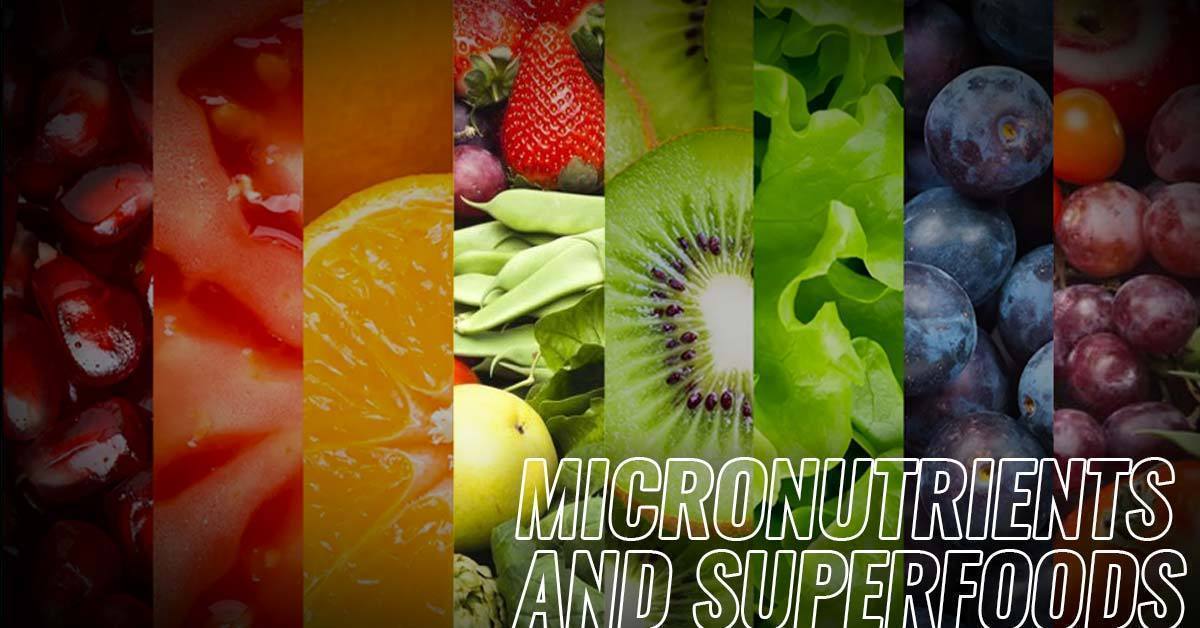When it comes to nutritional strategies, many have adopted the “If It Fits Your Macros (IIFYM)” lifestyle. With IIFYM, you set daily numbers based on your goals, of grams of Protein, Fats, and Carbohydrates to consume. You can literally eat whatever you want, as long as you reach your macros for the day. What many don’t factor in however is that Micronutrients are just as important as the macronutrients that you’re tracking.
Before we delve into the world of Micronutrients, let’s define some basic terms:
Macros- a.k.a macronutrients are a type of food (e.g., fat, protein, carbohydrate) required in large amounts in the human diet.
Micros- a.k.a micronutrients are what we commonly refer to as fruits and vegetables. Micronutrients include such minerals as flouride, selenium, sodium, iodine, copper and zinc. They also include vitamins such as vitamin C, A, D, E and K, as well as the B-complex vitamins.
Phytonutrients (also referred to as phytochemicals) are chemical compounds found in plants, that serve various functions to help protect the plant's vitality. Phytonutrients are important to include in your diet because they help boost your health by having antioxidant, anti-inflammatory, and liver-health-promoting properties.
Flavonoids are plant chemicals which not only provide the vivid colors seen in fruits and vegetables, but also essential nutrients when consumed in the human diet.
Micronutrients differ from macronutrients in that we don’t need them in as high quantities in our diet to be healthy. However, you shouldn’t discount micronutrients, because if your body doesn't get the small quantities of micronutrients that it needs, serious health problems can be the result.
When planning your daily dietary intake, clearly you need to take into account that hitting your micros is just as important as hitting macros. Unfortunately, there are tons of micros needed to be healthy, which can make getting them all in a bit challenging, especially if you’ve got lofty macro goals. While micro goals can be reached by eating fruits and veggies, they can also be reached via supplementation. More on that, later.
EAT THE RAINBOW
You’ve heard this old adage before, and for good reason - there’s a reason fruits and veggies are so rich in color! The presence of vivid colors, or flavonoids, will often indicate the presence of a very specific vitamin, mineral, or phytonutrient. For example: yellow/orange indicates the presence of carotenoids, red/pink indicates the presence of lycopene, and dark greens indicate the presence of lutein. By eating foods that fall across the full color spectrum, you are ensuring that you get at least of those essential micronutrients we keep harping on.
BACK TO BASICS - THE ESSENTIAL MICRONUTRIENTS
If you are trying to prioritize and work micronutrients into your diet, the top five you should pay attention to are:
- Folate - a B vitamin that aids in the formation of red blood cells. Found heavily in lentils, beans, spinach, and asparagus.
- Magnesium- relaxes the muscles, and is found in dark leafy greens, nuts and seeds, and whole grains.
- Iron - creates hemoglobin, and is found in clams, oysters, beef, chickpeas.
- Vitamin A- essential for vision, and is found in sweet potato, carrots, and dark leafy greens.
- Vitamin D - fights depression and boosts the autoimmune system. This is found in the UV rays of the sun (go figure), and in fatty fish, egg yolks, and mushrooms.
The list for beneficial nutrients truly does go on and on. That being said, if I presented you with the full list, it may leave your head spinning. If balancing your micronutrients sounds too tedious, or you’re very limited on macros, then supplementation is key. Enter Juiced Up, by Blackstone Labs.
Juiced Up is a micronized fruits and greens formula, designed to supplement your intake and ensure that you are getting all of your essential nutrients. In just one 11.25g scoop of Juiced Up, you are getting all of the phytonutrients found in: Blueberry, Black raspberry, Mulberry, Pineapple, Bilberry, Papaya, Camu camu, Luo han guo (monk fruit), Broccoli power, Carrot powder, Purple sweet potato, Kelp, FOS, Chlorella, Papain, Bromelain, and, Acai extract. Try eating all of that, every single day, and you might not have any calories left for your Macros - protein, fats, and carbs.
Containing essential nutrients in a formulation is all well and good, but utterly useless if your body can’t absorb and utilize it all. On that note, Capsorb is a proprietary ingredient found in Juiced Up that is designed to ensure maximum absorption of nutrients. All of the ingredients on the label are utilized and absorbed, period.
Just as important as hitting your macros, hitting your micronutrients is not to be ignored. If eating the rainbow is too challenging, or you find yourself low on macros to spare, be sure to give Juiced Up a try.
